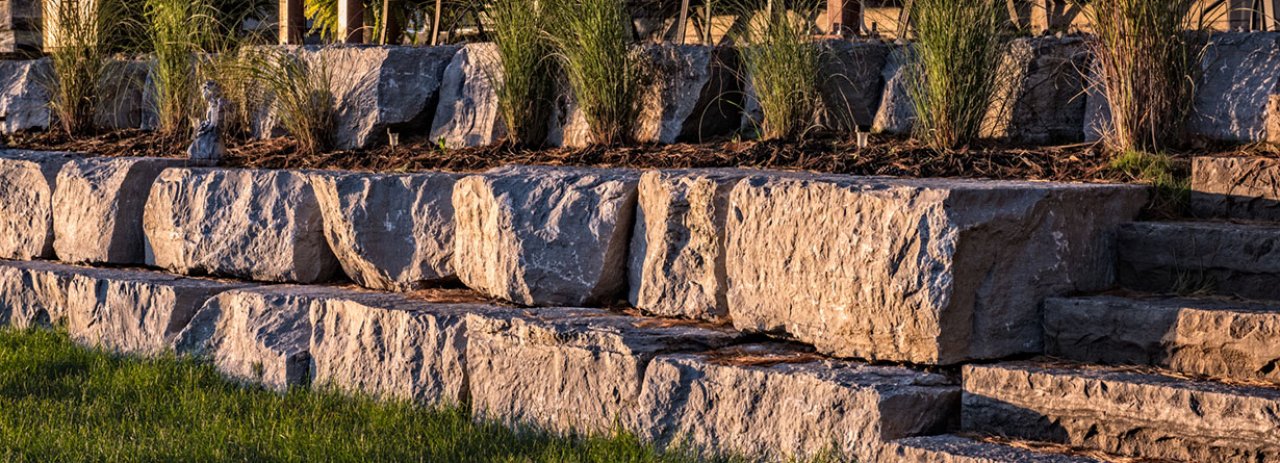Blog
The making of natural stone

Every piece of natural stone is special with its own unique grain and texture. When you build with it, you’re holding history in the palms of your hands. If you’ve ever wondered about that history, here’s a brief overview of the journey natural stone takes on its way to your jobsite.
Origins of Stone
There are three types of natural stone: igneous, sedimentary and metamorphic.
Igneous rocks are created when magma underground or lava from a volcano cools and hardens into stone. Granite is one of the most well-known igneous rocks.
Sedimentary rocks form when organic and inorganic materials are slowly compacted by immense pressure from sediment, earth and water above. Some sedimentary rocks, like sandstone, are formed from the eroded sediment of other rocks. Other types, like limestone, are created underwater from the remains of marine animals. This is why you’ll often find marine fossils in limestone products like Select Cascade.
Metamorphic rocks, like soapstone, are created when existing rock transforms or “metamorphoses” into a different type of rock through exposure to extreme heat, pressure or mineral-rich fluids and vapors deep within the earth’s crust.
Over unfathomable periods of time, stone is formed by these natural processes. But the task of extracting and fabricating the stone into useful building products falls to specialists working in quarries and fabrication shops around the world.
Quarrying and Extraction
A quarry is, essentially, an open pit located where large deposits of stone exist. Different layers within the same quarry may produce different types of stone, depending on the conditions that existed while the stone was forming.
Using saws, cables or drills, a large chunk of stone called a bench wall is cut away from the quarry face. The bench wall is then pushed over with heavy equipment or explosives. Once it is laying horizontally, the bench wall can be cut or drilled into manageable blocks weighing 15,000 lbs or more. These blocks are then transported to fabrication shops for further processing.
The Journey to Your Jobsite
At the fabrication shop, these large stone blocks are cut down into smaller billets. Stone that is cut against the grain, known as vein-cut, reveals the different layers of sediment that gathered and solidified when the stone was formed. Stone that is cut along its natural bedding plane (a.k.a. cross-cut) often exposes fossils and the mottled, marbling effect known as fleuri.
Some billets are further cut into slabs which are then trimmed or guillotined to the correct size for steps, coping, square cut flagstone, building stone and more. Other billets are sent to sophisticated CNC saws to be transformed into custom architectural details like caps, columns, porticos, fireplace surrounds and more.

Once the final cuts have been made, many products receive some type of surface treatment. This step removes any marks on the surface left by the saw blades and, to varying degrees, alters the texture and appearance of a product. The same stone may look very different based on whether it has been flamed, sandblasted, honed or polished.

The final step in the process, of course, happens when you use the stone on your jobsite to create functional, beautiful and unique homes and landscapes.
At Select Stone, we specialize in helping landscape and building professionals source the best quality natural stone for their projects. Call or visit us today and add a sense of history to your next project.

